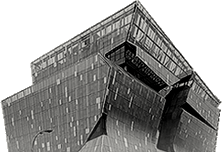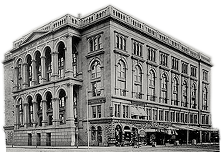CHINA BASIN
This slideshow is part of: Diana Agrest
THE RETURN OF THE REPRESSED: NATURE, China Basin, San Francisco 1989
Inscription of Nature: The Machine in the Garden
The city as object of desire is transformed into the city as the place where the forces of desire are set free. The China Basin project, is, much like Donna Haraway's cyborg, "about transgressed boundaries, potent fusions and dangerous possibilities."29 This project is a provocation. It is, to paraphrase Haraway, a mapping of our urban, social, and ideological reality, committed to partiality, irony, and perversity; it is completely without innocence. 30 Nature had been absent from urban discourse at the time of this project for over 50 years. The project served as a unique opportunity to examine some of the pressing questions concerning the place, role, and form of nature in urban discourse at this moment in time.
The China Basin is a three hundred acre site sloping down from the Embarcadero Freeway toward San Francisco Bay. The scheme assumes the creation of a new natural urban datum plane related to that of the existing freeway, which in turn is rendered obsolete and eventually transformed into a residential structure. The China Basin Canal bounds the northwestern edge of the site and the San Francisco Bay lies to the east. An undulating blanket of nature covers the site and is punctuated by curvilinear public spaces varying in function and depth.
A smooth surface of nature replaces the striated fabric of the city, in the form of various street grids, which is buried under the site: a seamless continuity of activity flows under the smooth surface of nature, continuous flux without delimitation. This project addresses and encourages programs of active production rather than the frantic comsumption, that characterizes most urban developments
Zones of programmatic superimposition and interrelation radiating out of each "courtyard" are created, thus defining a public place. The boundaries determining various programs are left in suspense, undetermined, creating areas of programmatic instability, dissolving the barriers of institutionalized practice and reflecting the chance process typical of urban change over time. An intricate movement system of moving platforms, ramps, and stairs allows pedestrians to travel from one place to another ; more traditional communication routes are also present proposing the exploration and possibilities of using other geometries than Euclidean, which is at the core of the American City and XXth Century Urbanism.
1-Donna J. Harroway " A Cyborg Manifesto" in Simians, Cyborgs and Women, New York, Routledge, 1991,p 154
2-Ibid, 151
Basin Site Plan
Top Level Green Plan
Program Plan
Circulation Systems
Section
Section through Olympic Training Center and Museum of the 20th Century
Plan











